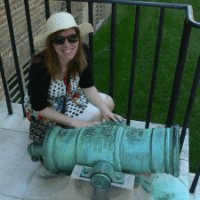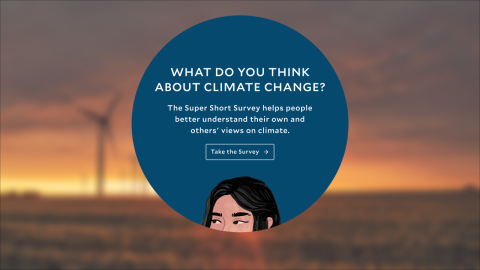
When I was applying for graduate school in museum education, I remember being asked as part of the interview where I saw the degree taking me. At that point in my life, I was confident that my career would follow the exact trajectory that my internships and work experience in undergrad were setting me up for—that I would work for a history museum or historic site. However, as anyone navigating a museum career knows, this field is anything but predictable. As my career has taking turns from coordinating a youth program at an internationally-focused art museum to developing history programs at a nature center, my philosophy of practice began shifting. I always envisioned museum education as being at the intersection of disciplines, but my career has really emphasized the role that museum educators can play bridging the gap between content specialists and visitors. In addition, my experience teaching in all types of settings
- Don’t let others judge your content knowledge on the basis of formal education
As an educator with experience teaching a variety of disciplines, I’ve often had to counter assumptions (both others and my own) that I was not qualified to talk about a topic, because I lacked formal training in this topic. This assumption is both harmful to staff who concentrated their formal training in education, but also devalues our visitors. When we say that someone can’t facilitate a discussion topic because they lack formal credentials, what other assumptions are we making? Are our visitors not qualified to talk about a topic, because they don’t have a degree in this? How about volunteers, who are amateur enthusiasts rather than professionals?
Luckily, the 21st century is a world where there are ways to educates oneself outside of formal education. Luckily, because of today’s content-driven world, it wasn’t difficult to educate myself through Youtube, Coursera, and by reaching out and having very focused, targeted conversations with the content-experts in my own institution.
- Educational practices are more interdisciplinary than they appear at first glance
When I was asked to teach a back-to-back Girl Scout program—one nature and one history—I was nervous that the kids (and their parents!) would quickly realize once we got to the animals that this wasn’t my specialty. Using the suggestions in the badge book, one immediately stuck out to me . “Observe an animal for fifteen minutes. Write down everything you see”. The reason this practice stood out was because I had assigned my art museum youth docents the exact same activity at my previous job—except with works of art, rather than exhibit animals. I then began racking my brain for other educational techniques that could be modified easily based on content—and found several that I could think of.
At the end of the day, museum education is about the tangibles, the real things we interpret—whether those things are artworks, animals, or historic objects. Our job is to provoke students to look critically at these tangible objects, and to help teach them how to organize the observations that they make into conclusions. These observations can be about any type of content, but it is our skill in facilitating these observations that makes us educators.
- Sharing expertise is a two-way street
I have a naturalist coworker who I do a “daily fact swap” with. Each morning we work together, I share with her a content of history knowledge she can relate back to visitors, and she shares me some fun facts about nature. It came in handy when she was on vacation and I had to cover her programs, not to mention it was a great way to deepen our collaboration and bonds as an education team.
Reflecting upon all my experiences as a multi-disciplinary educator, the best advice I can think of is a piece of advice I often give my volunteers and staff: keep an open mind, and try everything. I never imagined that my career as a history museum educator would lead to me feeding snakes in front of kindergarteners, but I’ve also never seen inquiry-based education quite like when I’m using teaching strategies I learned at an art museum on snakes and turtles. I knew that as an education professional, I was qualified to apply for my job, and I know I am successful because of my background—no matter what the content! And the best part of my career is that as a museum educator, I don’t just theorize about lifelong learning—I live it out every day with my efforts to learn the new content areas that I find myself teaching.
Bio: Alli Hartley is a multidisciplinary educator with an interest in public memory in a global context. She currently works at Ellanor C. Lawrence Park where she manages history programs and (occasionally) teaches programs about snakes. She previously worked at the National Museum of African Art and the College Park Aviation Museum.







